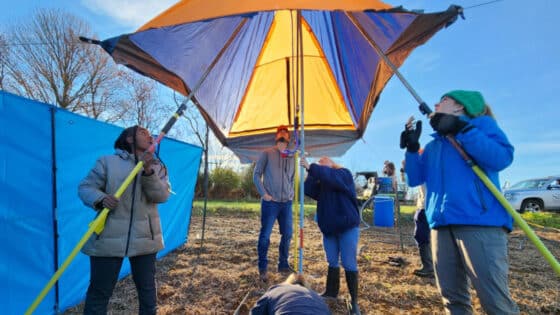Sweeney, B.W., R.W. Flowers, D.H. Funk, S. Ávila, and J.K. Jackson. 2009. Aquatic Insects 31:311–318.
Abstract
In 2006, Stroud Water Research Center conducted inventories of stream macroinvertebrates in the Peninsula de Osa in Costa Rica and the Madre de Dios watershed in eastern Peru. Both areas have extensive lowland tropical rainforests under threat from road development, tourism, poaching and gold mining. The mayfly communities of the two regions were substantially different in family relative abundances. In Osa the mayfly community was more or less evenly divided among Baetidae, Leptohyphidae, and Leptophlebiidae. In streams where one group was clearly dominant, this was most often Leptohyphidae. By contrast, in the Madre de Dios watershed Leptophlebiidae was often 75% or more of the mayfly fauna while Leptohyphidae was 20% or less. In both Osa and Madre de Dios, EPT indices were calculated for impacted streams and relatively undisturbed streams. However, physical characteristics such as stream size and substrate diversity were often a better predictor of community composition than human activity.


